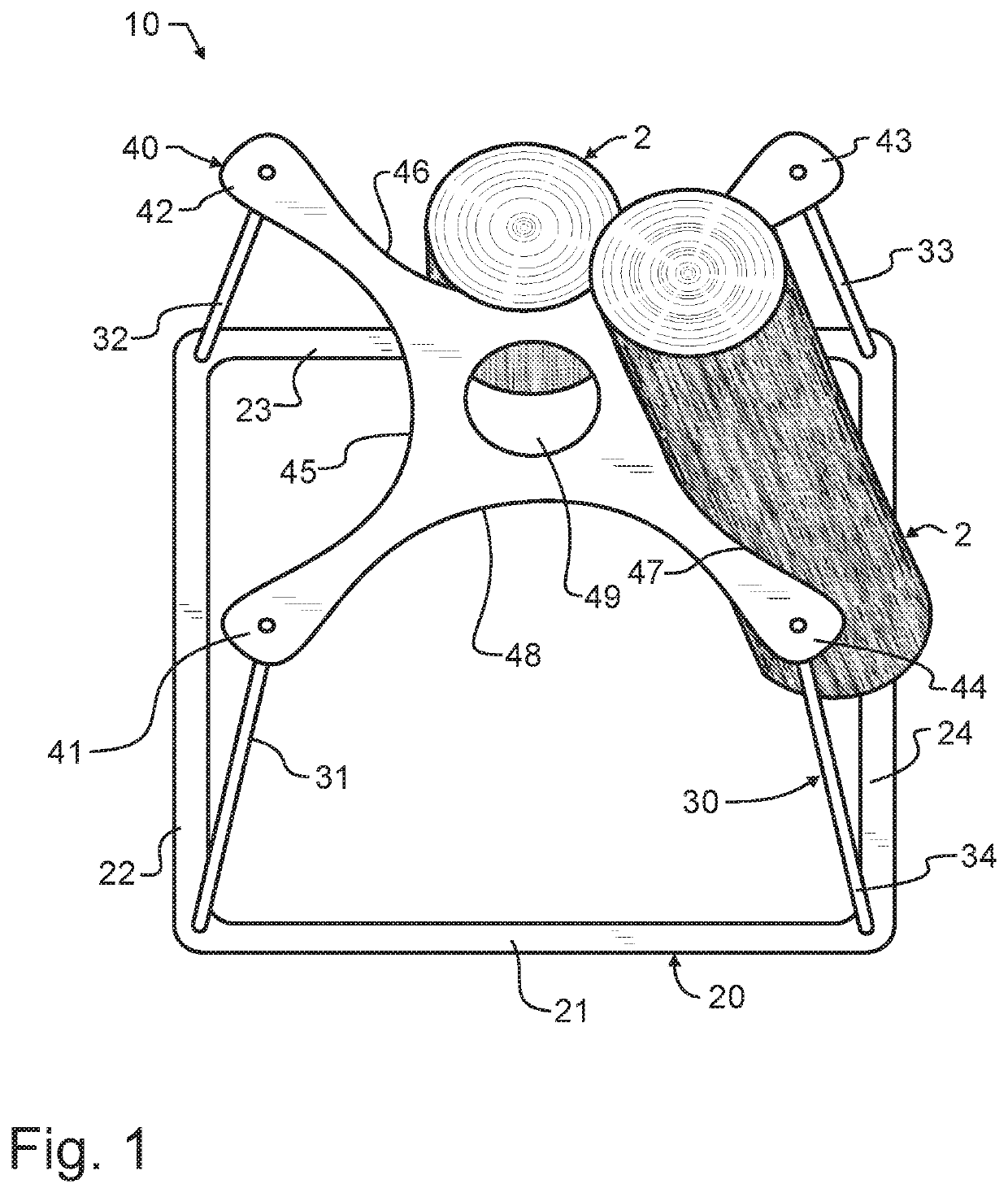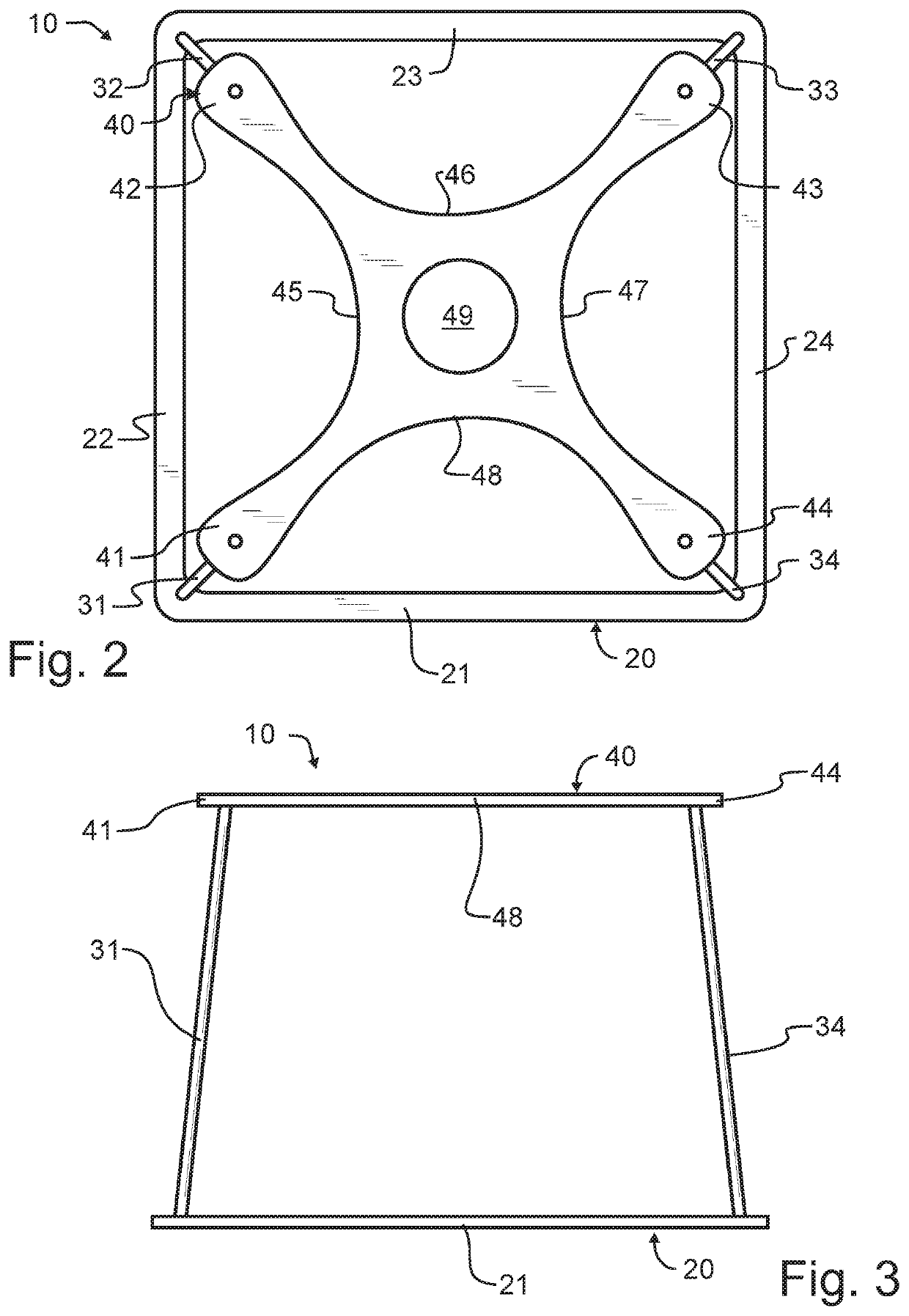Fire stump
a firewood stand and firewood technology, applied in the field of firewood stands, can solve the problems of reducing the energy of one piece, reducing the efficiency of one piece, and reducing creosote and similar emissions, so as to reduce the emission of smoke, soot, and creosote, and preserve the effect of radiant energy
- Summary
- Abstract
- Description
- Claims
- Application Information
AI Technical Summary
Benefits of technology
Problems solved by technology
Method used
Image
Examples
Embodiment Construction
[0028]Manifested in the preferred embodiment illustrated in FIGS. 1-3, the present invention provides fire stump 10 designed to hold firewood 2 and similar combustibles in a near-vertical stable position. A ground engaging base 20 provides a stable support surface, further stabilized by firewood 2 that rests in part thereupon. An upper firewood support 40 upon which firewood 2 leans is inset from the base, providing sufficient tilt to hold a plurality of stacked wood 2 in a conical configuration. A riser 30 runs between and separates ground engaging base 20 from upper firewood support 40.
[0029]With specific reference to FIG. 3, ground engaging base 20 and upper firewood support 40 are separated from each other by riser 30. With specific reference to FIG. 2, most of upper firewood support 40 extends from a centrally located vertical axis that would pass through the center of centrally located chimney hole 49 by a distance less than a distance than much of ground engaging base 20 will...
PUM
 Login to View More
Login to View More Abstract
Description
Claims
Application Information
 Login to View More
Login to View More - R&D
- Intellectual Property
- Life Sciences
- Materials
- Tech Scout
- Unparalleled Data Quality
- Higher Quality Content
- 60% Fewer Hallucinations
Browse by: Latest US Patents, China's latest patents, Technical Efficacy Thesaurus, Application Domain, Technology Topic, Popular Technical Reports.
© 2025 PatSnap. All rights reserved.Legal|Privacy policy|Modern Slavery Act Transparency Statement|Sitemap|About US| Contact US: help@patsnap.com


